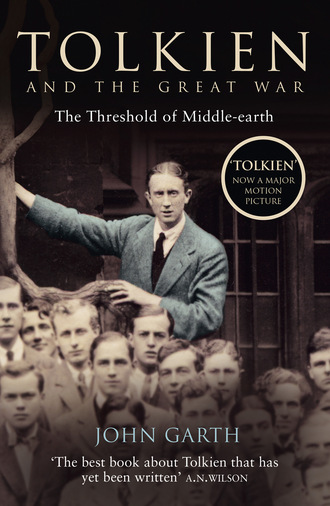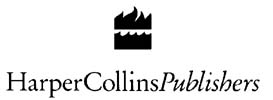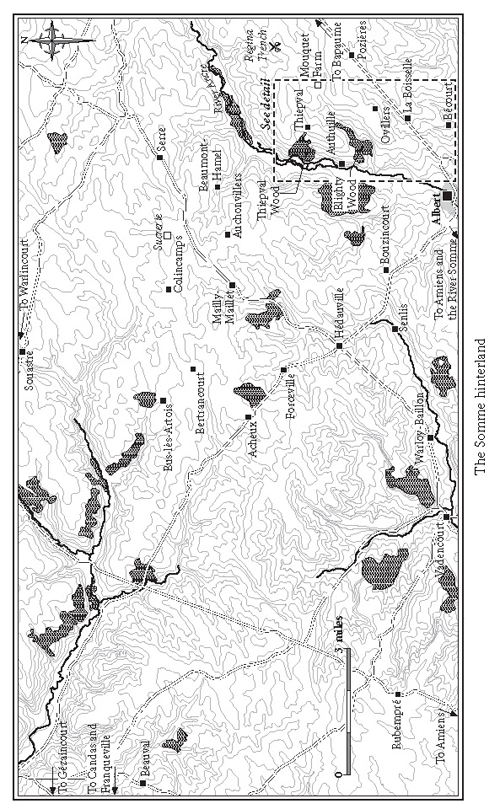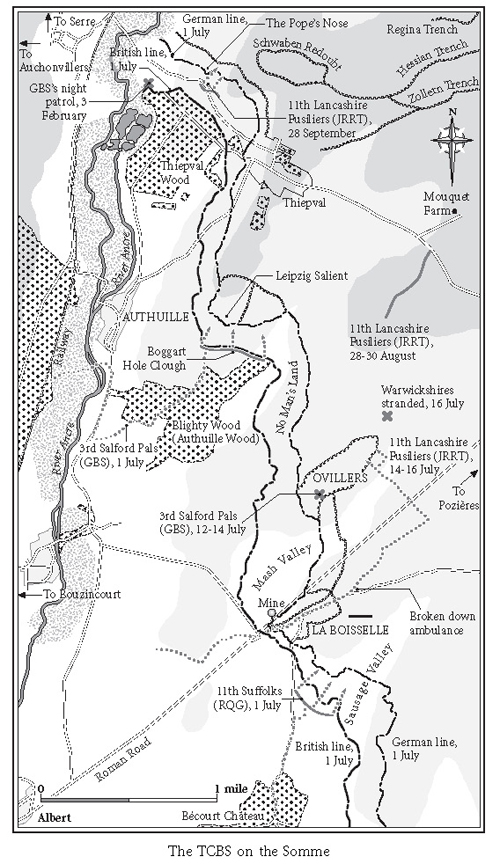
Полная версия
Tolkien and the Great War

Tolkien and the Great War
The Threshold of Middle-earth
John Garth

Copyright
HarperCollinsPublishers
1 London Bridge Street
London SE1 9GF
www.tolkien.co.uk
First published in Great Britain by HarperCollinsPublishers 2003
Copyright © John Garth 2003
Previously unpublished material © The Tolkien Trust/The J.R.R. Tolkien Copyright Trust 2003
Cover: Tolkien and fellow students at Exeter College, Oxford, in June 1914
John Garth asserts the moral right to be identified as the author of this work
All rights reserved under International and Pan-American Copyright Conventions. By payment of the required fees, you have been granted the non-exclusive, non-transferable right to access and read the text of this e-book on screen. No part of this text may be reproduced, transmitted, downloaded, decompiled, reverse engineered, or stored in or introduced into any information storage and retrieval system, in any form or by any means, whether electronic or mechanical, now known or hereinafter invented, without the express written permission of HarperCollins e-books.
Ebook Edition © APRIL 2010 ISBN: 9780007373871
Version 2019-03-22
This book is sold subject to the condition that it shall not, by way of trade or otherwise, be lent, re-sold, hired out or otherwise circulated without the publisher’s prior consent in any form of binding or cover other than that in which it is published and without a similar condition including this condition being imposed on the subsequent purchaser.
In memory of
John Ronald Reuel Tolkien, 1892-1973
Christopher Luke Wiseman, 1893-1987
Robert Quilter Gilson, 1893-1916
Geoffrey Bache Smith, 1894-1916
TCBS
Table of Contents
Cover Page
Title Page
Copyright
Dedication
Chronology
Maps
Preface
PART ONE The immortal four
Prologue
ONE Before
TWO A young man with too much imagination
THREE The Council of London
FOUR The shores of Faërie
FIVE Benighted wanderers
SIX Too long in slumber
PART TWO Tears unnumbered
SEVEN Larkspur and Canterbury-bells
EIGHT A bitter winnowing
NINE ‘Something has gone crack’
TEN In a hole in the ground
PART THREE The Lonely Isle
ELEVEN Castles in the air
TWELVE Tol Withernon and Fladweth Amrod
Epilogue. ‘A new light’
Postscript. ‘One who dreams alone’
Notes
Bibliography
Index
Tolkien and The Great War
About the Publisher
Chronology
Tolkien on the Somme, 1916
6 June—Tolkien arrives in France.
28 June—He joins 11th Lancashire Fusiliers.
1 July—Battle of the Somme begins.
3 July—Tolkien reaches the frontline area.
6-8 July—With G. B. Smith in Bouzincourt.
14-16 July—Tolkien takes part in attack on Ovillers.
17 July—He learns of Rob Gilson’s death.
21 July—He becomes battalion signal officer.
24-30 July—Trenches at Auchonvillers.
7-10 August—Trenches east of Colincamps.
16-23 August—Signal officers’ course, Acheux.
22 August—Tolkien sees Smith for the last time.
24-26 August—Trenches, Thiepval Wood.
28 August-1 September—Trenches east of Leipzig Salient.
1-5 September—Support trenches near Ovillers.
12-24 September—Training, Franqueville.
27-29 September—Action at Thiepval Wood.
6-12 October—Battalion HQ, Ferme de Mouquet.
13-16 October—Headquarters, Zollern Redoubt.
17-20 October—Ovillers Post and Hessian Trench.
21-22 October—Capture of Regina Trench.
27 October—Tolkien reports sick at Beauval.
28 October—He leaves his service battalion.
29 October-7 November—In hospital, Le Touquet.
8 November—Returns to England on Asturias.
Maps


Preface
This biographical study arose from a single observation: how strange it is that J. R. R. Tolkien should have embarked upon his monumental mythology in the midst of the First World War, the crisis of disenchantment that shaped the modern era.
It recounts his life and creative endeavours during the years 1914-18, from his initial excursions into his first invented ‘Elvish’ language as a final-year undergraduate at Oxford, through the opening up of his horizons by arduous army training and then the horror of work as a battalion signal officer on the Somme, to his two years as a chronic invalid standing guard at Britain’s seawall and writing the first tales of his legendarium.
Travelling far beyond the military aspects of the war, I have tried to indicate the breadth and depth of Tolkien’s interests and inspirations. The growth of his mythology is examined from its first linguistic and poetic seeds to its early bloom in ‘The Book of Lost Tales’, the forerunner of The Silmarillion, envisaged in its beginnings as a compendium of long-forgotten stories of the ancient world as seen through elvish eyes. As well as a critical examination of this first foray into what Tolkien later came to call Middle-earth, I have provided commentaries on many of his early poems, one of which (‘The Lonely Isle’) appears here in full for the first time since its publication in the 1920s, in a small-press book now long out of print. I hope I have given Tolkien’s early poetry and prose the serious consideration they deserve, not as mere juvenilia, but as the vision of a unique writer in the springtime of his powers; a vision already sweeping in its scope and weighty in its themes, yet characteristically rich in detail, insight and life.
One of my aims has been to place Tolkien’s creative activities in the context of the international conflict, and the cultural upheavals which accompanied it. I have been greatly assisted, firstly, by the release of the previously restricted service records of the British Army officers of the Great War; secondly, by the kindness of the Tolkien Estate in allowing me to study the wartime papers that Tolkien himself preserved, as well as the extraordinary and moving letters of the TCBS, the circle of former schoolfriends who hoped to achieve greatness but found bitter hardship and grief in the tragedy of their times; thirdly, by the generosity of the family of Tolkien’s great friend Rob Gilson in giving me unrestricted access to all of his papers. The intertwined stories of Gilson, Geoffrey Bache Smith, Christopher Wiseman, and Tolkien – their shared or overlapping vision and even their sometimes incendiary disagreements – add greatly, I believe, to an understanding of the latter’s motivations as a writer.
Although Tolkien wrote often about his own wartime experiences to his sons Michael and Christopher, when they in their turn served in the Second World War, he left neither autobiography nor memoir. Among his military papers, a brief diary provides little more than an itinerary of his movements during active service in France. However, such is the wealth of published and archival information about the Battle of the Somme that I have been able to provide a detailed picture of Tolkien’s months there, down to scenes and events on the very routes he and his battalion followed through the trenches on particular days.
It may be noted here that, although full and detailed surveys of the source material have been published for Smith’s and Gilson’s battalions (by Michael Stedman and Alfred Peacock, respectively), no similar synthesis has been attempted for Tolkien’s for more than fifty years; and none, I believe, that has made use of a similar range of eyewitness reports. This book therefore stands as a unique latter-day account of the experiences of the 11th Lancashire Fusiliers on the Somme. Since my narrative is not primarily concerned with matters of military record, however, I have been at pains not to overburden it with the names of trenches and other lost landmarks (which often have variants in French, official British, and colloquial British), map references, or the details of divisional and brigade dispositions.
If nothing else, the phenomenal worldwide interest in Tolkien is sufficient justification for such a study; but I hope it will prove useful to those who are interested in his depiction of mythological wars from old Beleriand to Rhûn and Harad; and to those who believe, as I do, that the Great War played an essential role in shaping Middle-earth.
In the course of my research, the emergence of this imagined version of our own ancient world from the midst of the First World War has come to seem far from strange, although no less unique for all that. To sum up, I believe that in creating his mythology, Tolkien salvaged from the wreck of history much that it is good still to have; but that he did more than merely preserve the traditions of Faërie: he transformed them and reinvigorated them for the modern age.
So much has the biographical aspect of this book grown, however, that it seemed best, in the end, to restrict my comments on the possible relationship between the life and the writings to a few observations, and to set out my overall case in a ‘Postscript’. Having read the story of Tolkien’s experiences during the Great War, those who also know The Hobbit and The Lord of the Rings, or The Silmarillion and its antecedents, will be able to draw their own more detailed conclusions, if they wish, about how these stories were shaped by the war.
Perhaps this is the way Tolkien would have wanted it, if indeed he had countenanced any biographical inquiry into his life and work. A few years after the publication of The Lord of the Rings, he wrote to an enquirer:
I object to the contemporary trend in criticism, with its excessive interest in the details of the lives of authors and artists. They only distract attention from an author’s works…and end, as one now often sees, in becoming the main interest. But only one’s Guardian Angel, or indeed God Himself, could unravel the real relationship between personal facts and an author’s works. Not the author himself (though he knows more than any investigator), and certainly not so-called ‘psychologists’ [Letters, 288].
I do not claim any divine insight into Tolkien’s mind, and I do not pretend to put him on the psychiatrist’s couch. I have not gone hunting for shock and scandal, but have focused at all times on matters that seem to me to have played a part in the growth of his legendarium. I hope that this story of the passage of an imaginative genius through the world crisis of his times will cast a little light on the mysteries of its creation.
At all points, matters of opinion, interpretation, and exegesis are my own, and not those of the Tolkien family or the Tolkien Estate. I thank them, however, for permission to reproduce material from private papers and the published writings of J. R. R. Tolkien.
Many other large debts of gratitude have accrued during the writing of this book. First and foremost, I must thank Douglas A. Anderson, David Brawn, and Andrew Palmer for advice and assistance beyond the call of duty or friendship. Without their help, and that of Carl F. Hostetter and Charles Noad, this book would never have seen daylight. I would particularly like to express my gratitude to Christopher Tolkien, for his generosity in sharing with me not only his father’s personal papers but also a great deal of his own time; his perceptive comments have rescued me from many pitfalls and have helped to shape Tolkien and the Great War. For their great kindness in loaning me letters and photographs of R. Q. Gilson, I would like to thank Julia Margretts and Frances Harper. For hospitably fielding my questions about Christopher Wiseman, and for permission to quote from his letters, I thank his widow Patricia and her daughter, Susan Wood.
David Doughan, Verlyn Flieger, Wayne G. Hammond, John D. Rateliff, Christina Scull, and Tom Shippey have all given me their expertise and insight on multifarious aspects of Tolkien’s life and work; the latter’s critical study The Road to Middle-earth greatly enlarged my understanding of Tolkien’s work. But for the help of Christopher Gilson, Arden R. Smith, Bill Welden, and Patrick Wynne, my discussions of linguistic matters would have foundered. Phil Curme, Michael Stedman, Phil Russell, Terry Carter, Tom Morgan, Alfred Peacock, and Paul Reed have all helped me to overcome obstacles to my understanding of Kitchener’s army and the Battle of the Somme. Thanks must also go to all those others who have taken the time to answer my endless questions, including Robert Arnott, the Reverend Roger Bellamy, Matt Blessing, Anthony Burnett-Brown, Humphrey Carpenter, Peter Cook, Michael Drout, Cyril Dunn, Paul Hayter, Brian Sibley, Graham Tayar, Timothy Trought, and Catherine Walker.
Of course, none of the above are responsible for any errors of fact or interpretation that may remain.
For help with archival research, I would like to express my gratitude to Lorise Topliffe and Juliet Chadwick at Exeter College, Oxford; Christine Butler at Corpus Christi College, Oxford; Kerry York at King Edward’s School, Birmingham; Dr Peter Liddle at the Brotherton Library, the University of Leeds; Tony Sprason at the Lancashire Fusiliers Museum, Bury; as well as the staff of the Public Record Office, Kew, the Departments of Documents, Printed Books, and Photographs at the Imperial War Museum, Lambeth, the Modern Papers Reading Room at the Bodleian Library, Oxford, and Hull Central Library. Archive material and photographs have been reproduced with the permission of the governors of the Schools of King Edward IV and the Rector and Fellows of Exeter College, Oxford. I am grateful to Cynthia Swallow (née Ferguson) for permission to make use of material from the papers of Lionel Ferguson; to Mrs T. H. A. Potts and the late Mr T. H. A Potts for permission to quote from the papers of G. A. Potts; and to Mrs S. David for permission to quote from the papers of C. H. David. Every effort has been made to contact the copyright holders for other papers from which I have quoted.
For his meticulous copy-editing, his patience with my stylistic foibles, and his extraordinary fortitude, I must thank Michael Cox. Thanks also go to Clay Harper, Chris Smith, Merryl Futerman, and Ian Pritchard for their help and advice during the course of publication; and to the Evening Standard, for allowing me time off to complete this book.
Throughout, my newspaper colleagues have helped me keep it all in perspective. Ruth Baillie, Iliriana Barileva, Gary Britton, Patrick Curry, Jamie Maclean, Ted Nasmith, Trevor Reynolds, Dee Rudebeck, Claire Struthers, Dan Timmons, Priscilla Tolkien, A. N. Wilson, Richard Younger, and especially Wendy Hill have all provided much-needed support and encouragement at crucial points. Finally, I would like to thank my family – my parents Jean and Roy Garth, my sisters Lisa and Suzanne, my nephews Simeon and Jackson, and my niece Georgia – and to apologize to them for disappearing behind a pile of papers for two years.
Prologue
It is December 16th, nearly the dead of winter. Chill gusts buffet the flanks and faces of the attackers struggling to advance across a bare hundred yards or so of mud. They are a ramshackle group, some of them mere novices. The minute these young men muster a concerted effort, a few veterans press forward with all their energy and skill. But most of the time there is chaos. Again and again their opponents shrug off the assault and land a fearsome counterblow, so that all the guile, fortitude, and experience of the veterans can barely hold back the assault. Their captain, J. R. R. Tolkien, tries to bring his own experience to bear; but those around him are, in the words of an eyewitness, ‘a beaten pack’.
The year is 1913: the Great War is eight months away, and this is just a game. Not yet soldiers, Tolkien and his team-mates are Oxbridge undergraduates back in Birmingham for Christmas, and today, in accordance with annual tradition, they are playing rugby against their old school’s First XV.
Just shy of twenty-two, Tolkien is nothing like the professorial figure now familiar from the covers of biographies, all tweed, kindly wrinkles, and ubiquitous pipe. John Ronald (as his old friends call him) cuts a lean, slight figure on the rugby pitch, but in his days as a forward in the King Edward’s School First XV he earned a reputation for dash and determination, and now he plays for Exeter College, Oxford.
His mind is a storehouse of images: memories of terrified flight from a venomous spider, of an ogreish miller, of a green valley riven in the mountains, and visions of dragons, of a nightmare wave towering above green fields, and perhaps already of a land of bliss over the sea. The storehouse is not yet a workshop, however, and he is not yet the maker of Middle-earth. But after a mediocre effort in his Classics exams this year he has taken a serendipitous stride towards it. He has said goodbye to Latin and Greek and is now tackling Chaucer and Beowulf, scrutinizing the origins and development of the English language. It is the affirmation of an early love for the Northern languages and literatures that will always fire his imagination. The first glimpse of Middle-earth is fast approaching. Far off in the unimagined future a cock crows in the courtyards of a city under siege, and horns answer wildly in the hills.
On the rugby pitch today, however, Tolkien is not at his best. He was meant to open an Old Boys’ debate at the school yesterday with the proposition that the world is becoming over-civilized, but he was taken suddenly ill and had to back out.
His other former First XV team-mates on the field have largely given up rugby since leaving school. Christopher Wiseman, tall, leonine, and barrel-chested, used to share the scrum with Tolkien, but at Peterhouse, Cambridge, he has had to stop playing rugby and rowing because of an old heart problem. Today, he is relegated to the less aggressive three-quarter line, near the back of the field and next to another veteran, Sidney Barrowclough. There are others here who were never good enough to play in the First XV against other schools, but all King Edward’s boys played a lot of rugby. For internal sports, the school was split into four groups, or ‘houses’; and most of those in Tolkien’s team on this December day once also belonged to his house. In truth, however, his team’s esprit de corps comes not from the rugby pitch, but from the old school library.
Tolkien met Christopher Wiseman in 1905. Wiseman, at twelve, was already a talented amateur musician; one of his compositions from about this time ended up in the Methodist Hymn-Book. His father, the Reverend Frederick Luke Wiseman, who headed the Wesleyan Methodists’ Birmingham Central Mission, had raised him on Handel and his mother Elsie had nurtured in him a love of Brahms and Schumann; his particular delight was in German chorales. But rugby was the start of his friendship with Tolkien. Both played in the red strip of Measures’ house (named after the schoolmaster who ran it), and partook in its bitter rivalry with the boys in green from Richards’. Later, they took their place in the scrum in the school’s First XV. But they experienced a meeting of minds. Wiseman, a year younger than Tolkien, was his intellectual equal and chased him up the academic ladder at King Edward’s. Both lived in the Birmingham suburb of Edgbaston: Christopher in Greenfield Crescent and John Ronald latterly a street away in Highfield Road. They would walk along Broad Street and Harborne Road between home and school immersed in passionate debate: Wiseman was a Liberal in politics, a Wesleyan Methodist by religion, and a musician by taste, while Tolkien was naturally conservative, a Roman Catholic, and (thought Wiseman) tone-deaf. Theirs was an unlikely partnership, but all the richer for it. They discovered that they could argue with an incandescence few friendships could survive, and their disputes only served to seal the intensely strong bond between them. In recognition of this, they called themselves privately the Great Twin Brethren. Even their closest friend on and off the rugby pitch, Vincent Trought, did not share this bond.
When Tolkien’s final term at King Edward’s arrived he briefly became Librarian. To help him run his little empire he recruited Wiseman, who insisted that Trought must join him as fellow sub-librarian. Tolkien’s place at Oxford was by this time assured and he could relax. Soon the library office became unsuitably lively; but the coterie that gathered there could afford to test the Headmaster’s patience because his son, Robert Quilter Gilson, was also in the thick of things.
All of Tolkien’s friends were capable of intellectual seriousness. They dominated every school debate and play, and they formed the backbone of the Literary Society, to which Tolkien read from the Norse Sagas, Wiseman expounded on historiography, Gilson enthused about the art critic John Ruskin, and Trought delivered a remarkable paper remembered as ‘almost the last word’ on the Romantics. By dint of their enthusiasm, this artistic little clique wrested school life from the hands of boys who would otherwise have controlled it. In the polarized world of school politics, it was effectively a triumph for Measures’ house over Richards’ house, the red against the green; but to Tolkien and his friends it constituted a moral victory against cynics who, as Wiseman put it, sneered at everything and lost their temper about nothing.
Much of the time the chief goal of the librarians was much less high-minded, however, and they sought only to incapacitate each other with laughter. In the summer of 1911, the hottest in four decades, Britain boiled in a stew of industrial unrest and (in the words of one historian) ‘the sweltering town populations were psychologically not normal’. The library cubby-hole became a hotbed of cultural stratagems, surreal wit, and tomfoolery. While the dead hand of exams laid hold of much of the rest of the school, the librarians brewed clandestine teas on a spirit-stove and established a practice whereby each had to bring in titbits for secretive feasts. Soon the ‘Tea Club’ was also meeting outside school hours in the tea-room at Barrow’s Stores, giving rise to an alternate name, the Barrovian Society.
In December 1913, though Tolkien has been at Oxford for over two years, he remains a member of the Tea Club and Barrovian Society, or ‘the TCBS’ as it is now known. The clique still meets for ‘Barrovians’ and is still largely devoted to drollery. Its membership has always fluctuated, but Christopher Wiseman and Rob Gilson remain at its heart, along with a more recent initiate, Geoffrey Bache Smith. On the rugby pitch today, the TCBS is represented by all four, as well as by Wiseman’s fellow three-quarter-back, Sidney Barrowclough. But Tolkien is missing an excellent full-back in Vincent Trought. The TCBS’s first loss, he died nearly two years ago after a long illness.



